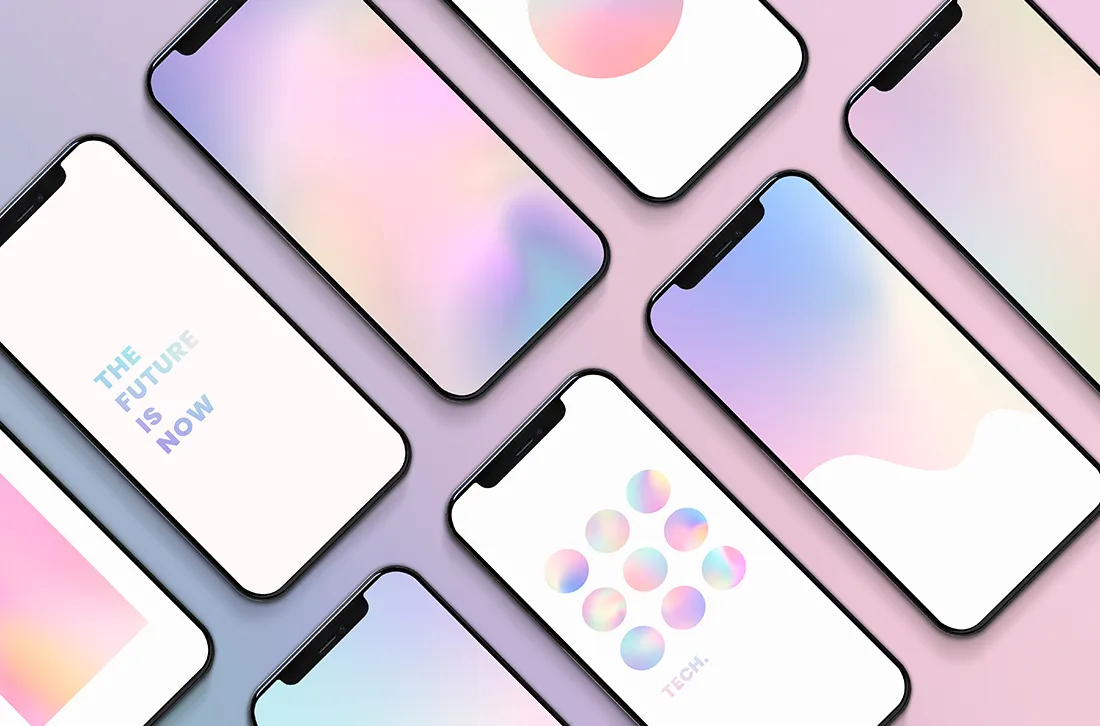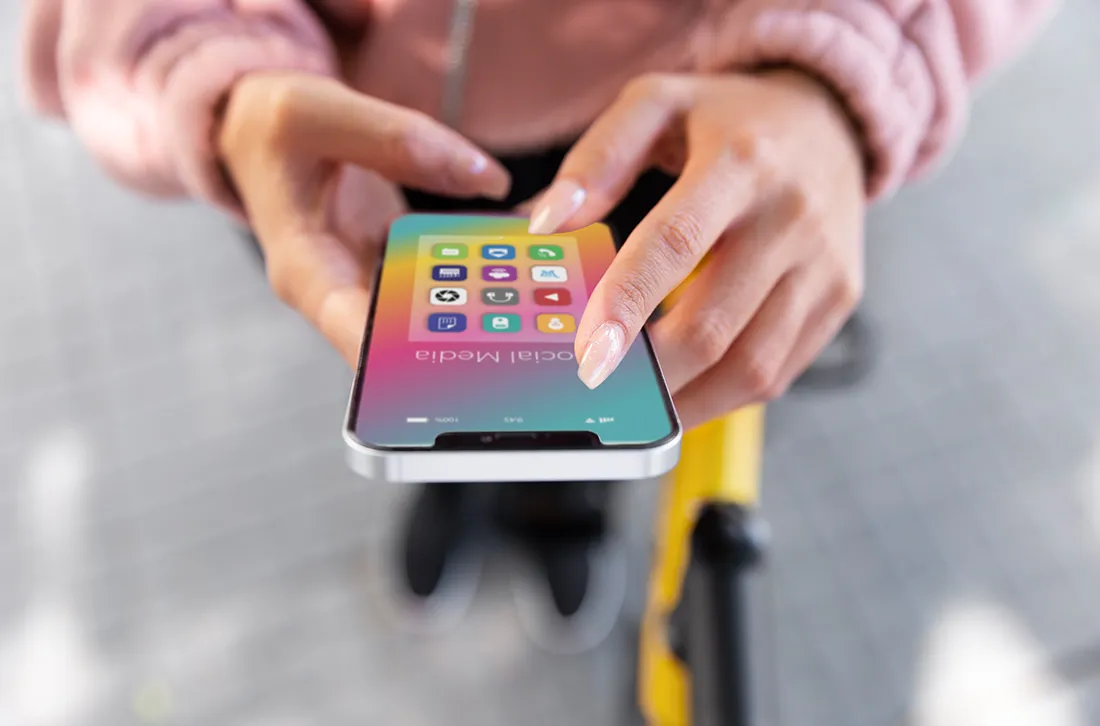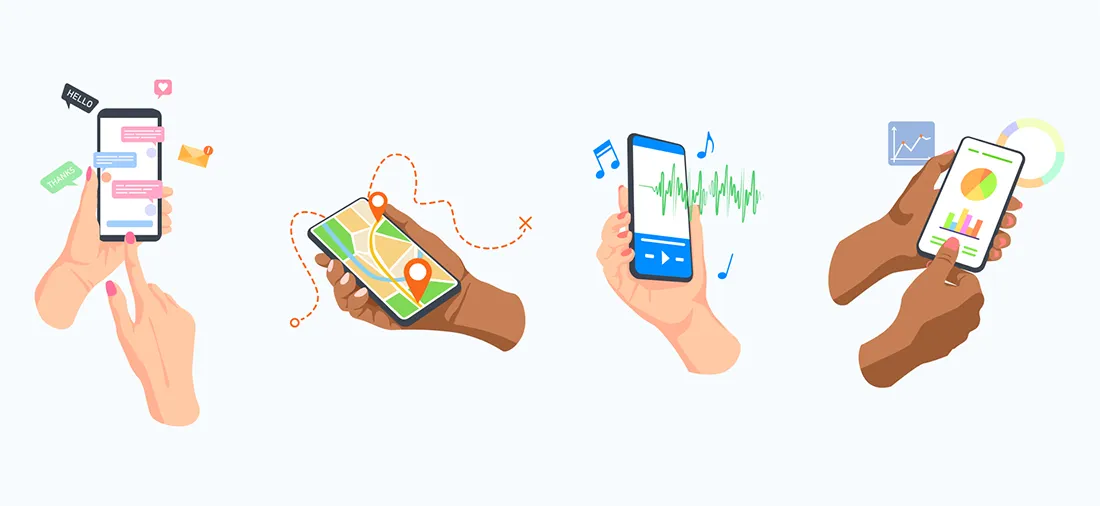After hitting the $581.9 billion mark in 2020, global mobile app revenue is approaching a new milestone of $808.7 billion in 2022. Not surprisingly, more and more SMBs and startups are turning to leading mobile app developers like Purrweb to create a product they can use to attract new potential customers.
The COVID-19 pandemic has added fuel to the world’s growing reliance on smartphones, leading to a frantic growth rate for software. Mobile app development in 2022 has been much larger and faster than anticipated.
This is due to new technologies such as 5G and peripheral computing, as well as a change in attitudes toward apps in general. Indeed, we are immersed in a time when our society is becoming increasingly tied to smartphones and, by extension, to their capabilities.
In this article, we take a look at what apps we got in 2022 and continue to see them evolve in 2023. How will apps use 5G? Will apps be more prevalent not only on phones but also in wearable devices? Is there better mobile marketing software to look at? We’ll answer these questions and more to help you understand where the industry is headed in the next few years.
Key mobile app trends in 2022
As seen during the pandemic, mobile app development will grow at a faster rate over the next few years. In 2022 alone, about 190 billion products have been downloaded in the Google Play Store, and another 42 billion in the Apple App Store It has been confirmed that 89.2% of mobile Internet time is spent on mobile apps.
Knowing which way the wind is blowing means distinguishing between the drivers of future software trends – technology and social needs like those of the pandemic. So we’ve compiled 5 innovations that will make a splash in 2022 and set the stage for the mobile world in the years to come. These should help you position your business in the best possible way.
The 5th generation of the mobile standard
5G is changing mobile app development in ways we never thought possible. It is also said that 5G heralds the fourth industrial revolution, but what does the introduction of 5G mean for smartphones?
It all comes down to the speed and interconnectivity of 5G. Unlike its predecessor, the latency of the 5th standard is less than one millisecond. Compare that to human reaction times of up to 300 milliseconds, and the innovation seems instantaneous. In addition, 5G’s combination of extremely low latency, high bandwidth and connection density will open up opportunities for mobile application development in areas such as:
All of these innovations in accelerated development we will probably see as early as 2023. Next-generation applications will use this power and speed to do things we never thought possible.
On the other hand, increased speed and reduced latency can also reduce battery consumption. And higher radio frequency and shorter wavelengths will make geotargeting and geo-fencing more accurate. From the forecast: In 2025, 5G will hold 20% of the global mobile telecom market share.
Edge computing
The cloud and big data bring great value to business. The former has been heralded as one of the Internet’s greatest advantages, but it is quickly showing its shortcomings. The problem with the cloud is that it is highly centralized, making latency a big problem for the technologies that 5G promises. One of the best ways to deliver on these promises, however, is to use edge computing.
Edge computing is the evolution of the cloud. It will literally move it to the user, forcing some of your computing needs to be handled either locally or at the nearest station, the “edge” of the cloud. And what happens to the cloud? It doesn’t go anywhere – it just goes into your device. When edge computing becomes widespread, your device itself becomes part of the cloud, which eliminates some of the latency issues. This means that the wondrous new world of wireless networks, autonomous cars and the 5G Internet of Things will rely on edge-powered devices.
B2B mobile application development trends also point to the growing importance of peripherals in the future. In fact, location-based services will dominate the market in 2022 because of the demand for improved data and 5G technology adoption.

Progressive and “instant” applications
PWAs are a hybrid of web pages and apps. One of the best advantages of developing these mobile apps is that they take less time to create than conventional products. It turns out, they’re just websites with app features. On the other hand, they have extended usefulness rather than just web pages because you can keep them on your home screen. For example, an app loses 20% of potential users every step of the way (between first encounter and use). PWAs avoid this problem because as soon as a user sees it for the first time, they can start using it right away.
Considered the next major advancement in mobile app development, PWAs provide advantages that offset the shortcomings of native products. Among these advantages:
Wearable devices
The market for wearable devices is maturing. Mobile app trends indicate that the development of these devices is a gold rush. Websites and apps will not only run on PCs and smartphones, but also on wearable devices. This has made setting them up a challenge, but it will soon become apparent that phones are as obsolete as desktop computers are now.
Beacon technology.
Since it first appeared in 2013, beacon technology has grown significantly from Apple’s low-energy Bluetooth device to a globally recognized technology with more than 400 million deployments. According to GeoMarketing, there are currently 3.9 million proximity sensors deployed worldwide that use a beacon. Yet despite this, 70% of consumers are unaware of the technology and that brands, retailers and advertising agencies are using it to send push notifications to customers.
But it’s not just about retail. Beacons offer a personalized experience. People are 19 times more likely to interact with a product if it’s advertised with a beacon. So, developing mobile apps that leverage this technology and easily integrate it with a beacon signal will accelerate conversions or improve customer-brand interactions. Beacons can even be used for AR and mobile payments.
More on-demand apps
On-demand apps are a kind of “third party” where users can rent a service or product. One prime example is Uber, where the service in question is a ride. These apps fulfill different requirements – hence the name – in different areas, such as food, logistics, groceries, housing, and more, when and where users need them.
There are countless on-demand apps in 2021, and 2022 and beyond is no exception – there just will probably be more. New technology has made new demands obvious, and people will be thinking of more ways to make their lives easier. Luxury items are also becoming necessities as on-demand apps permeate every aspect of life, from home to career to travel and more.

Conclusion
In 2023, desktops will become increasingly irrelevant to consumers, especially in retail, and a mobile-centric ecosystem will dominate the landscape. New technologies such as 5G, peripherals and wearable devices will lead the way. Developers should keep these newfangled tools in mind in their iterative process.





